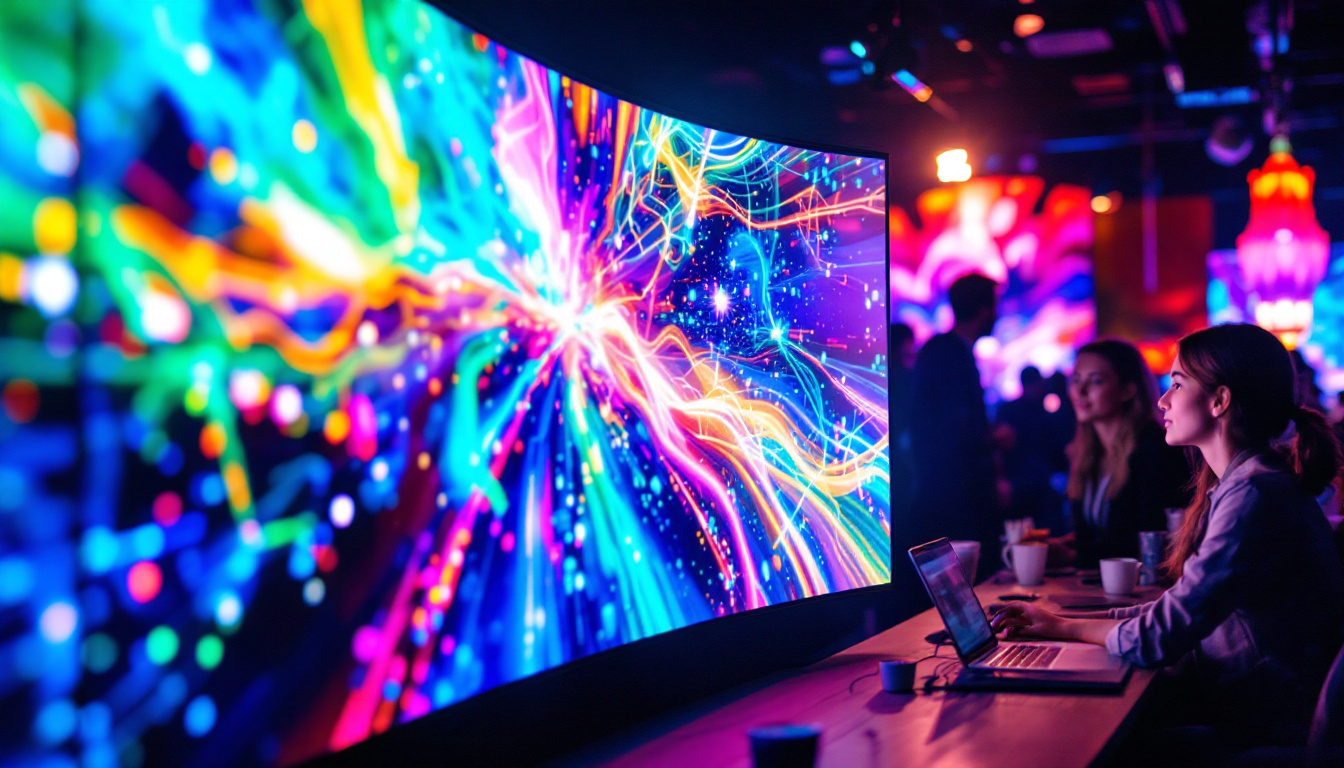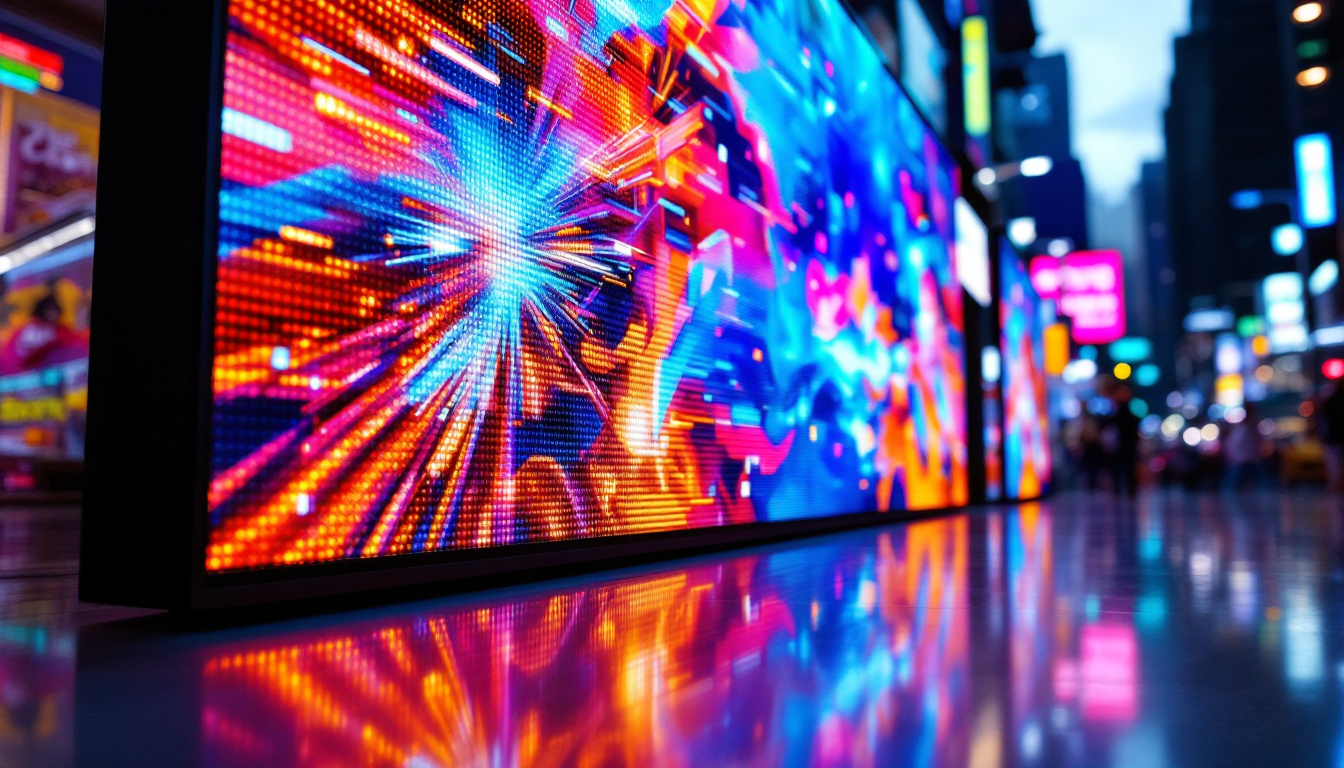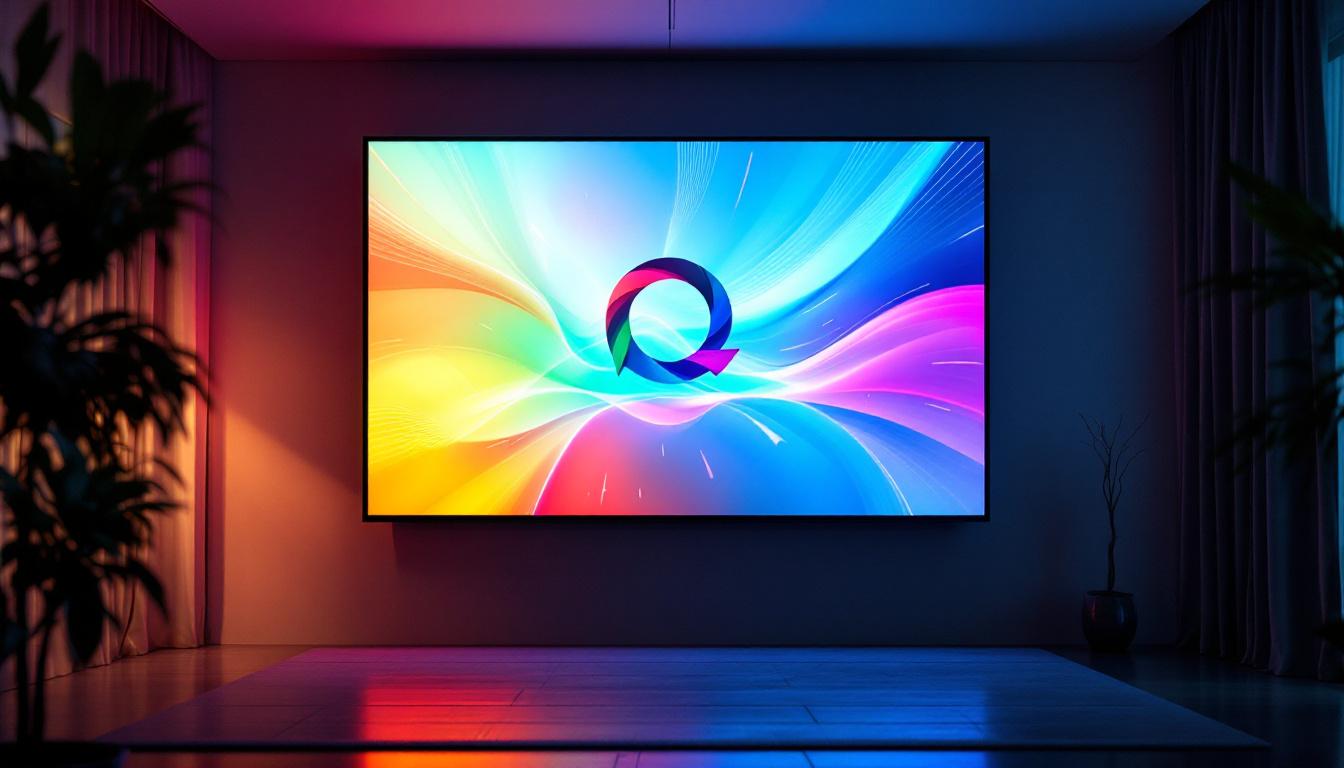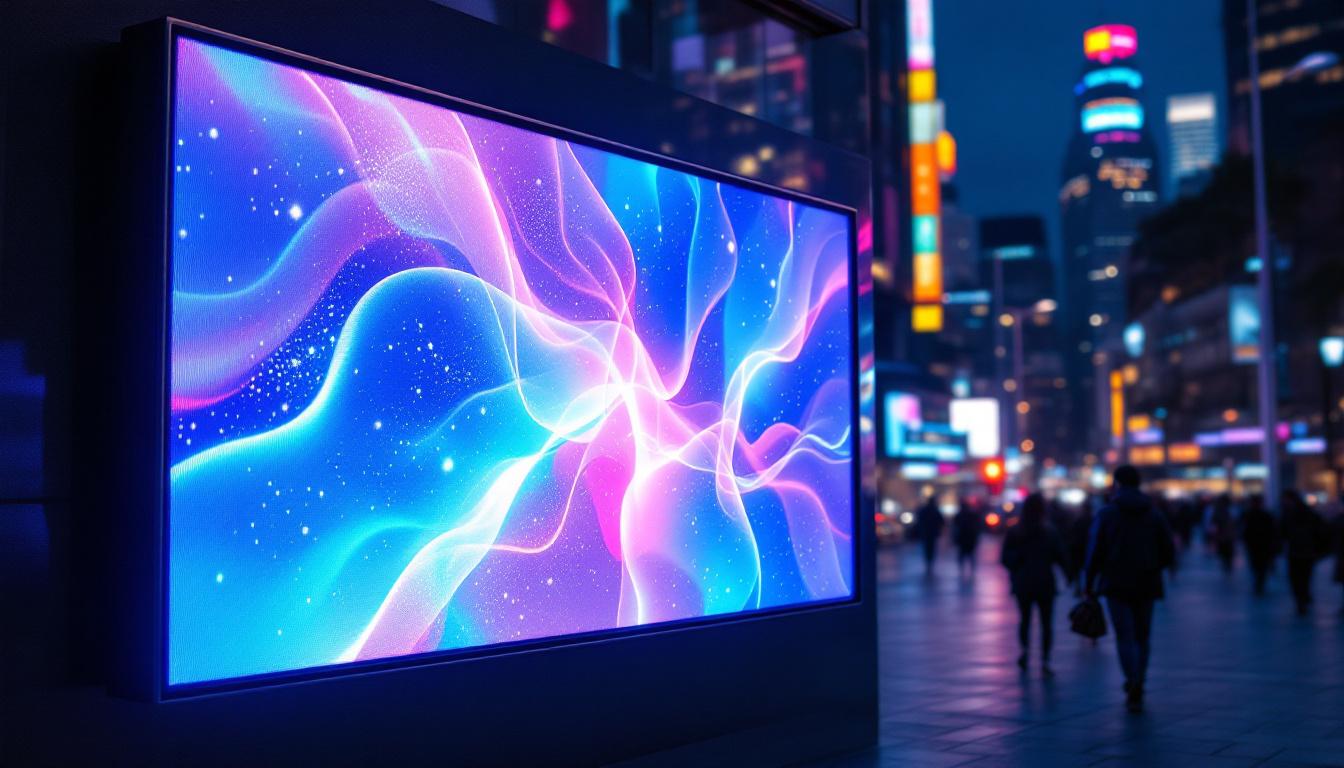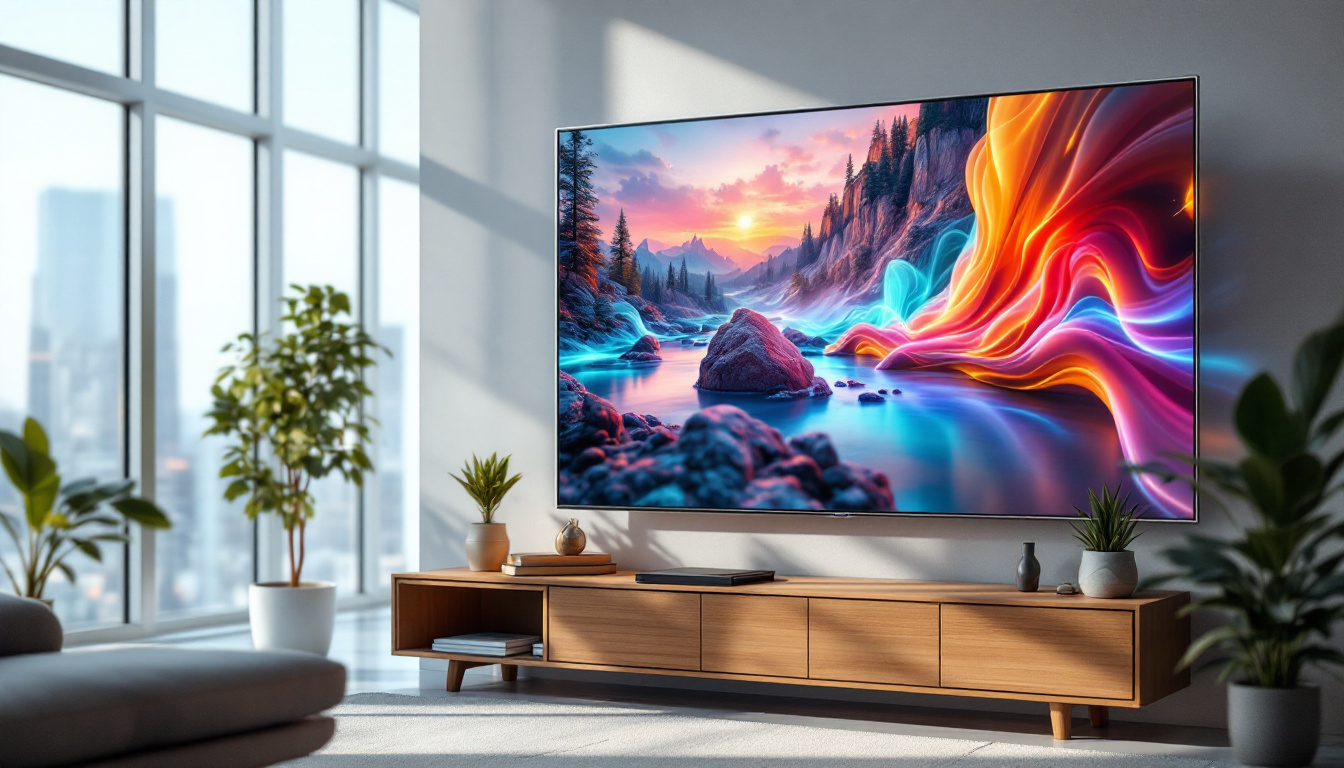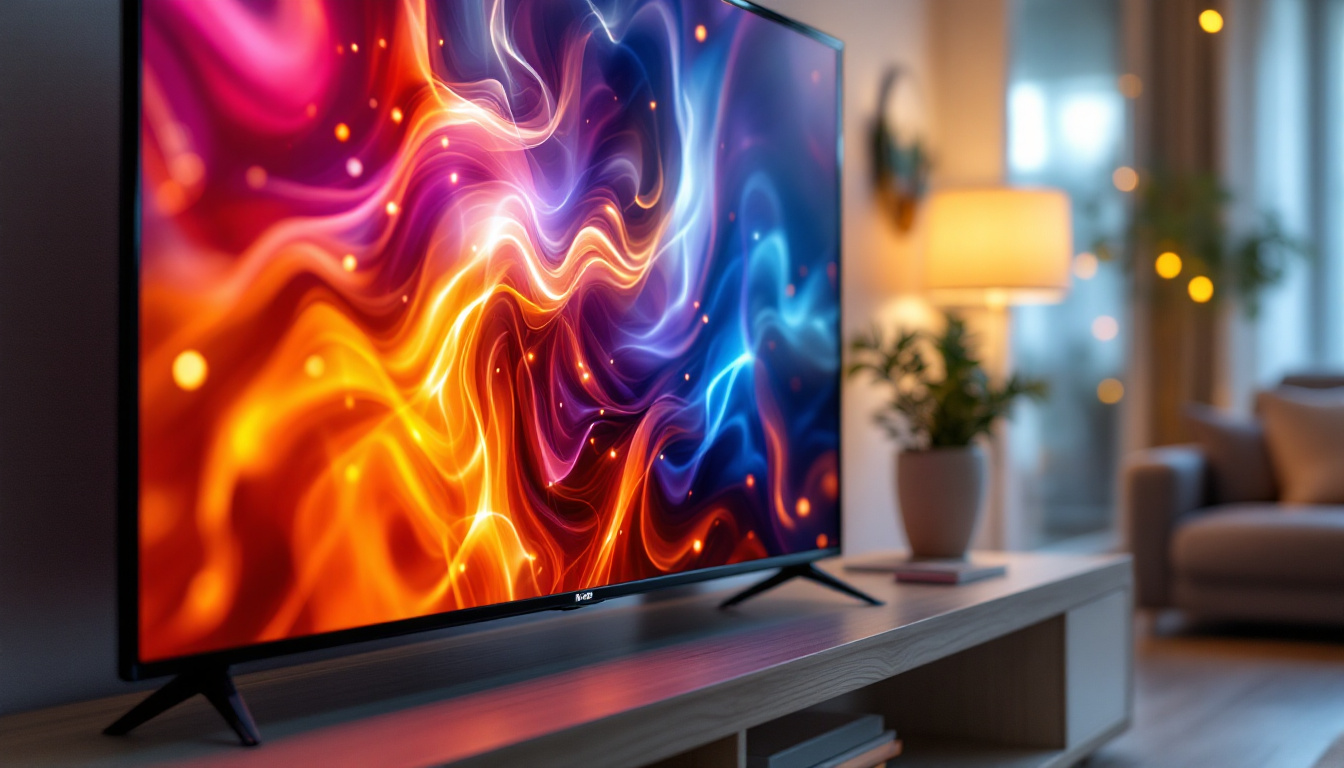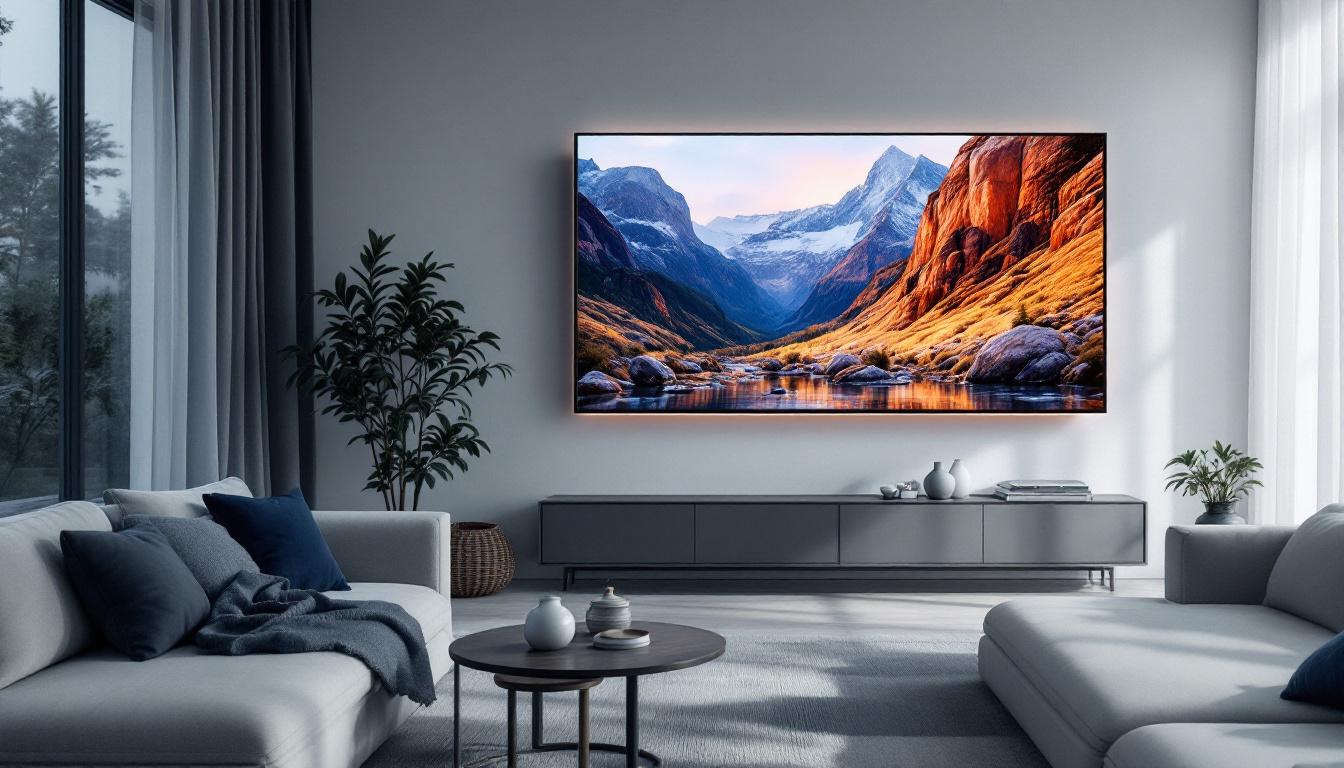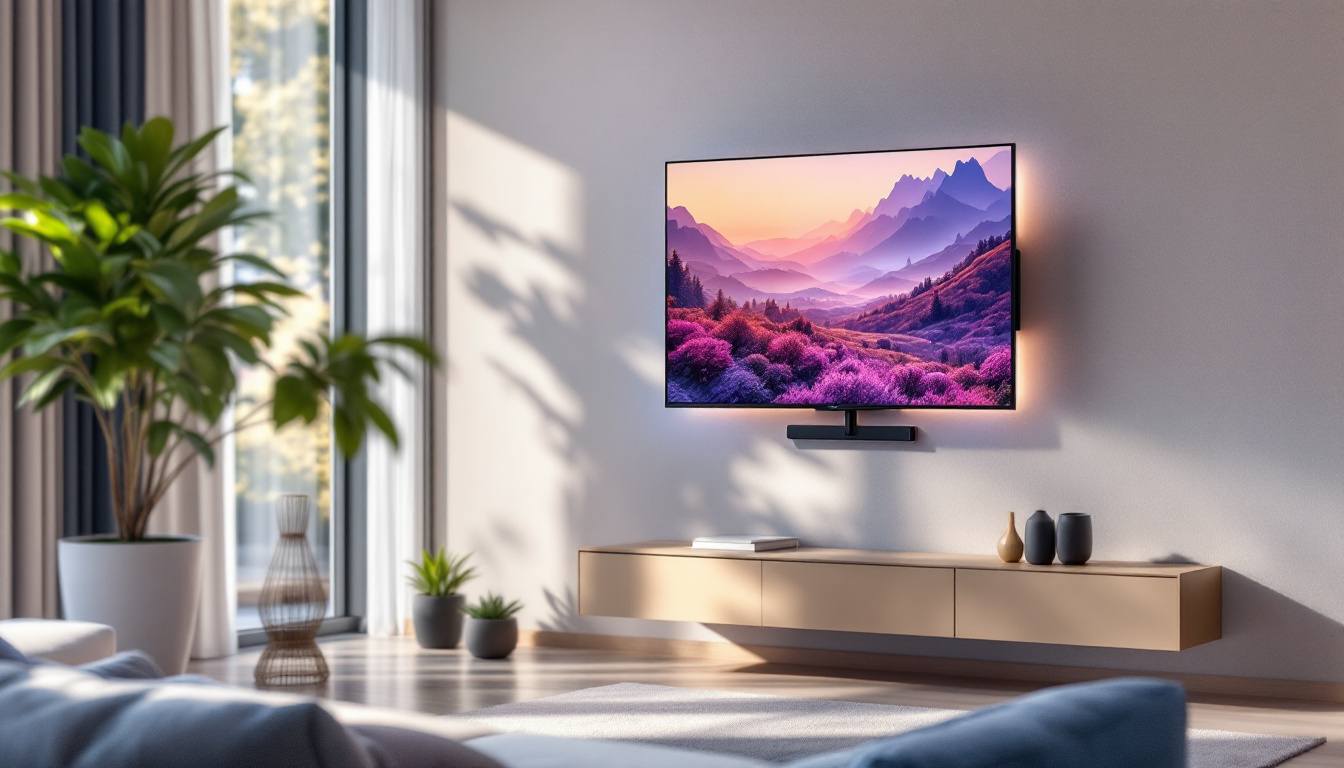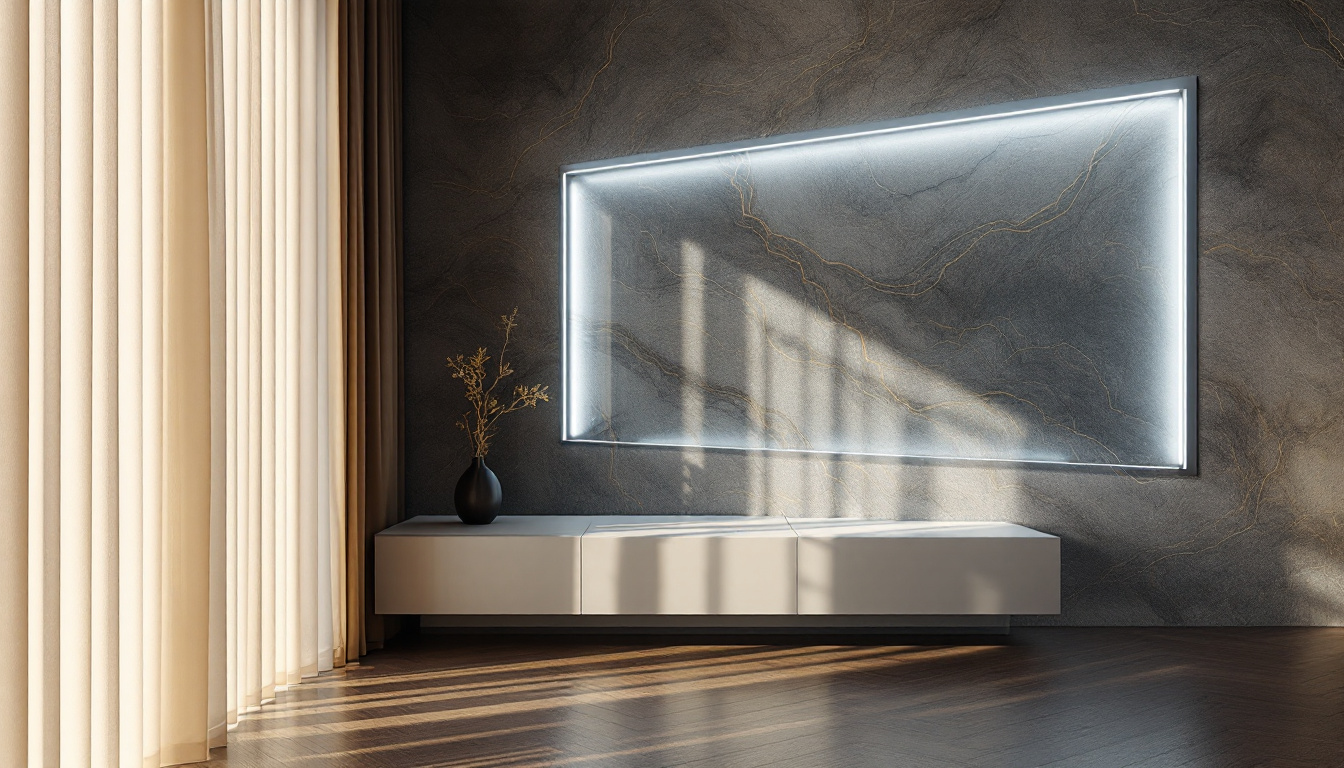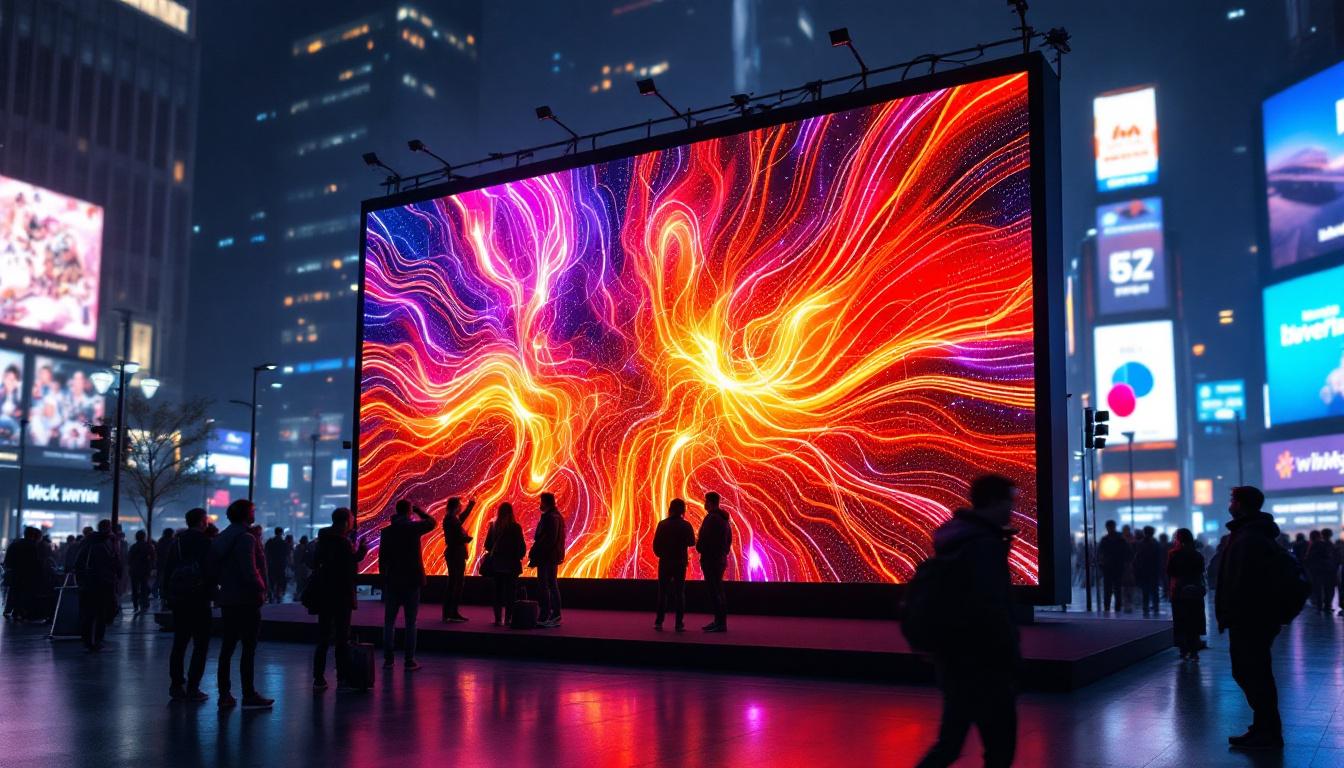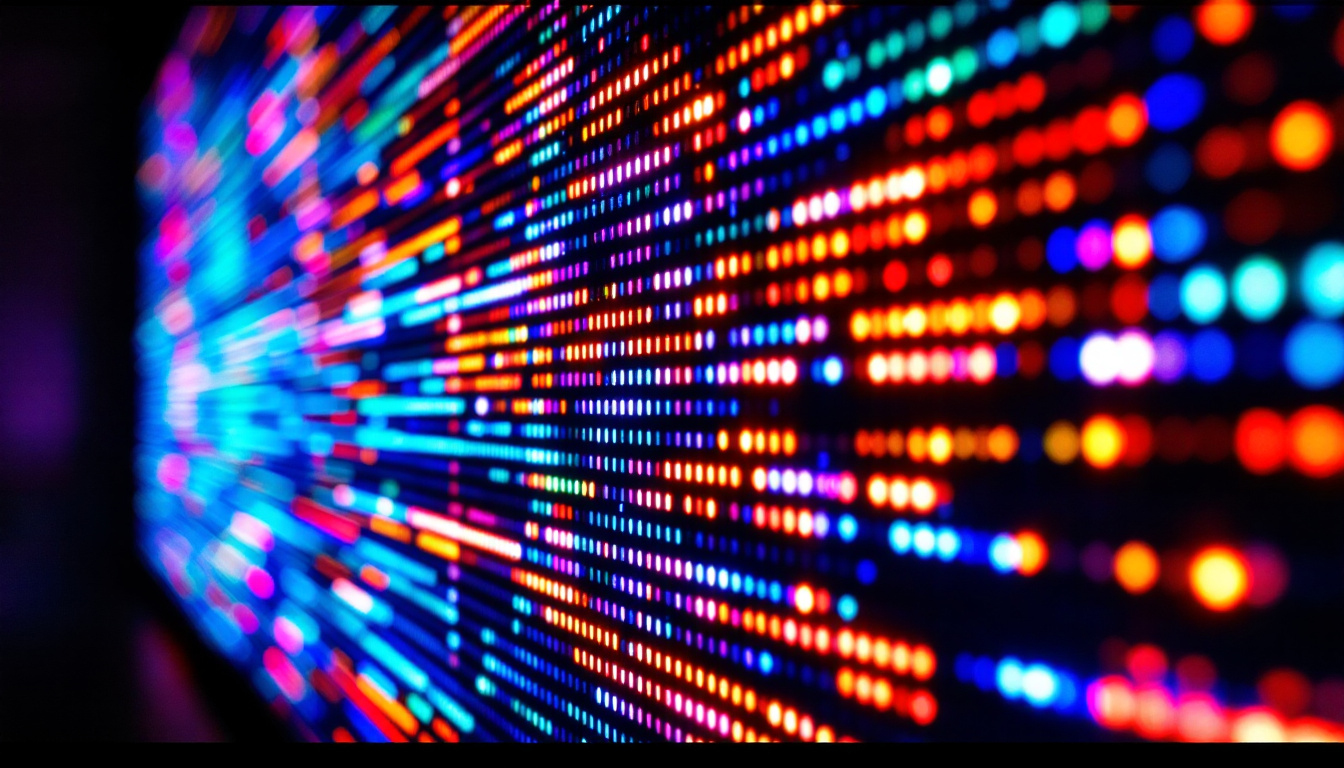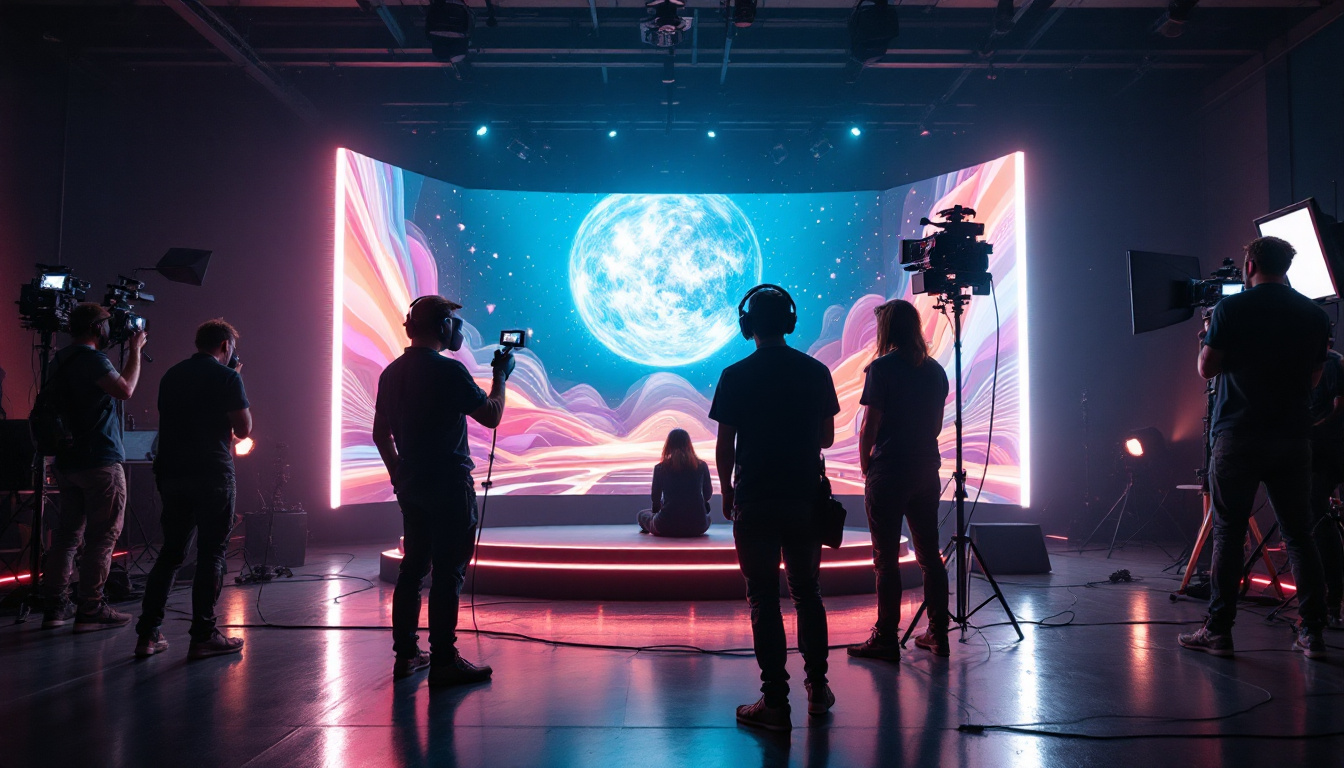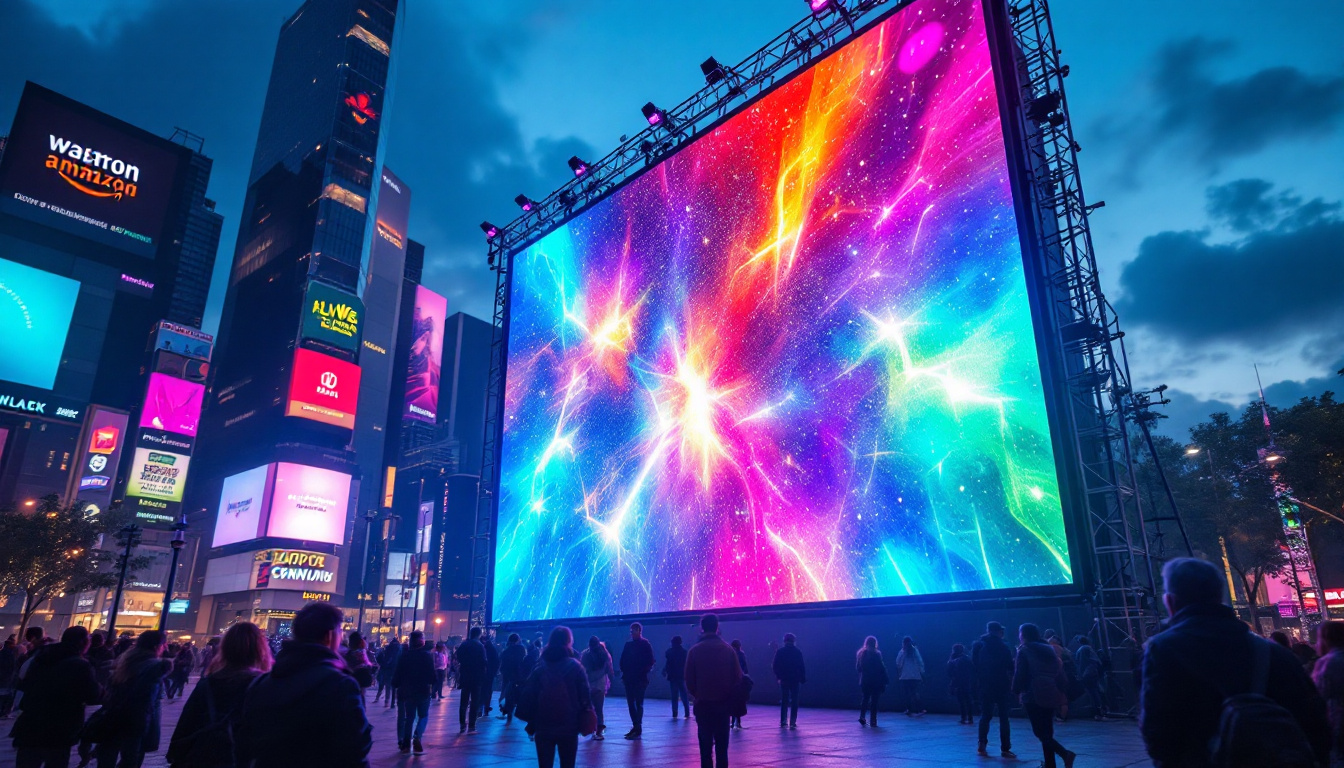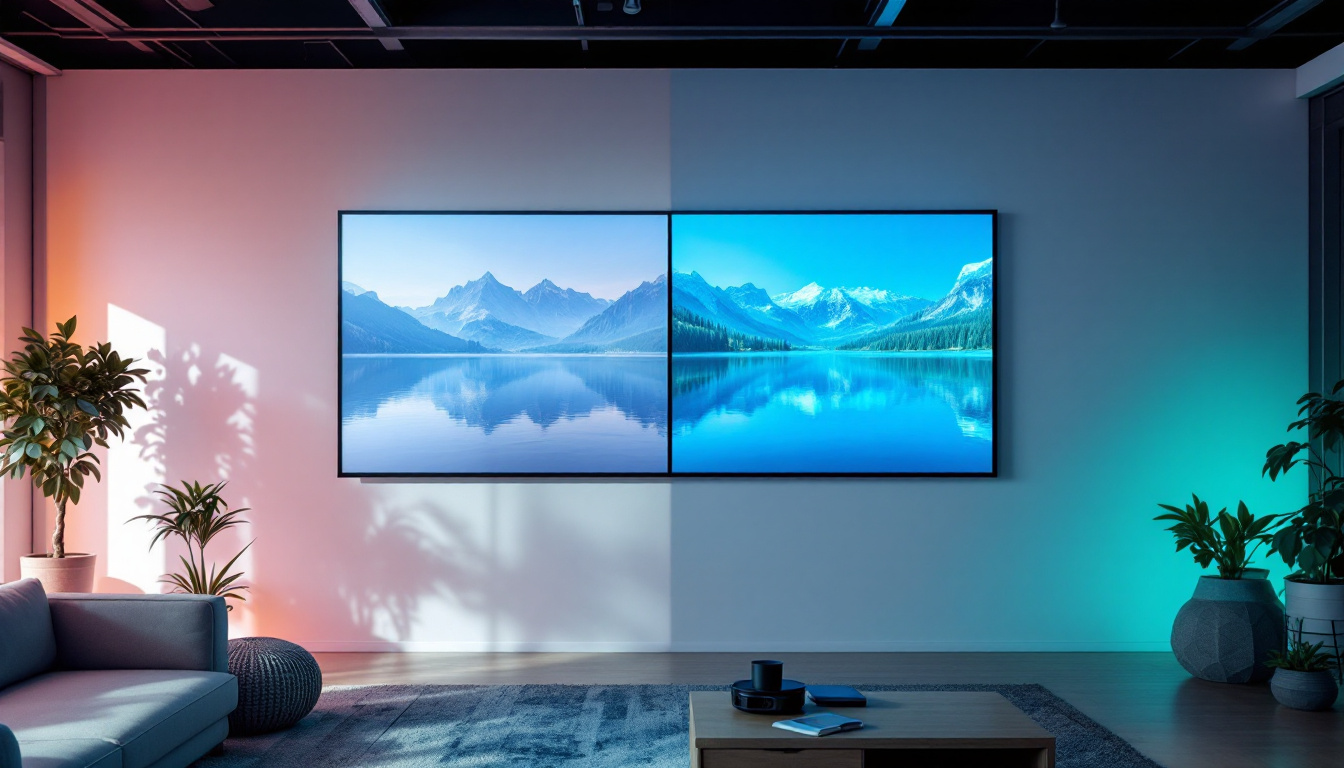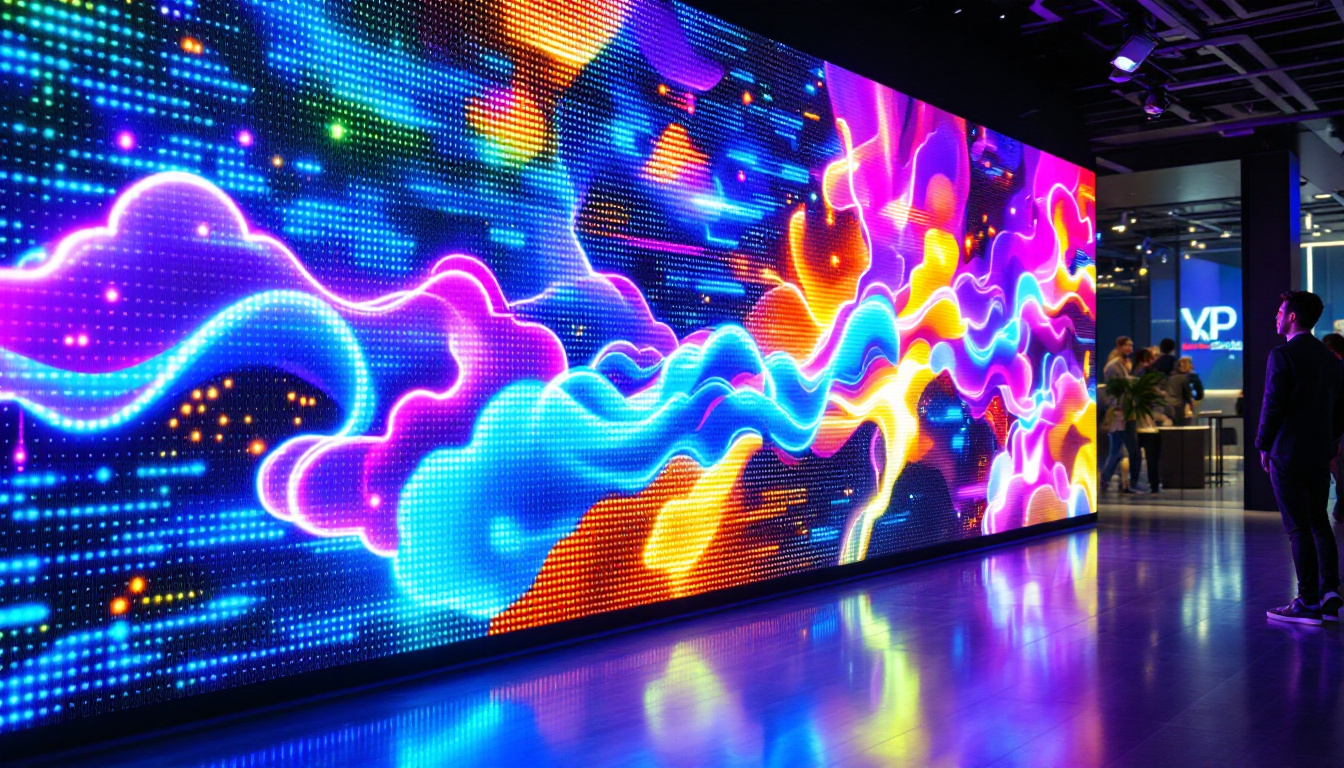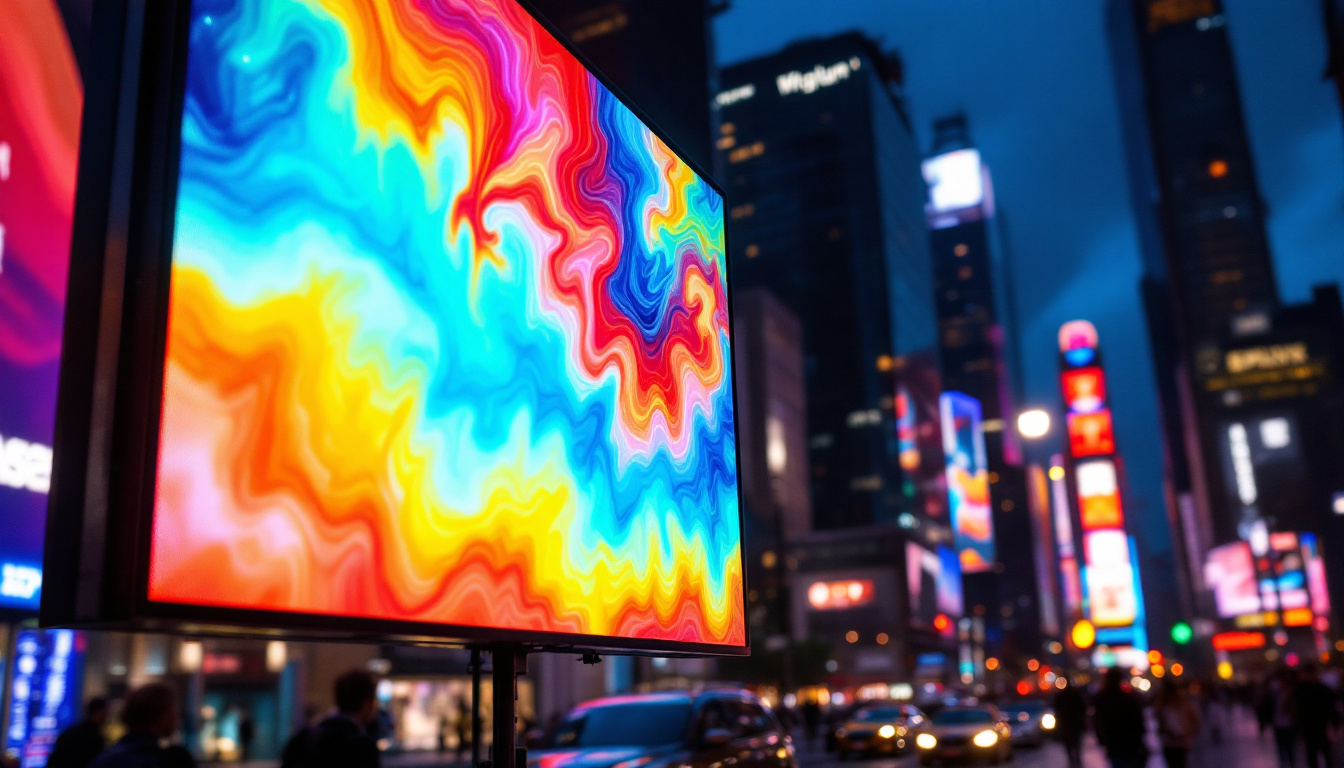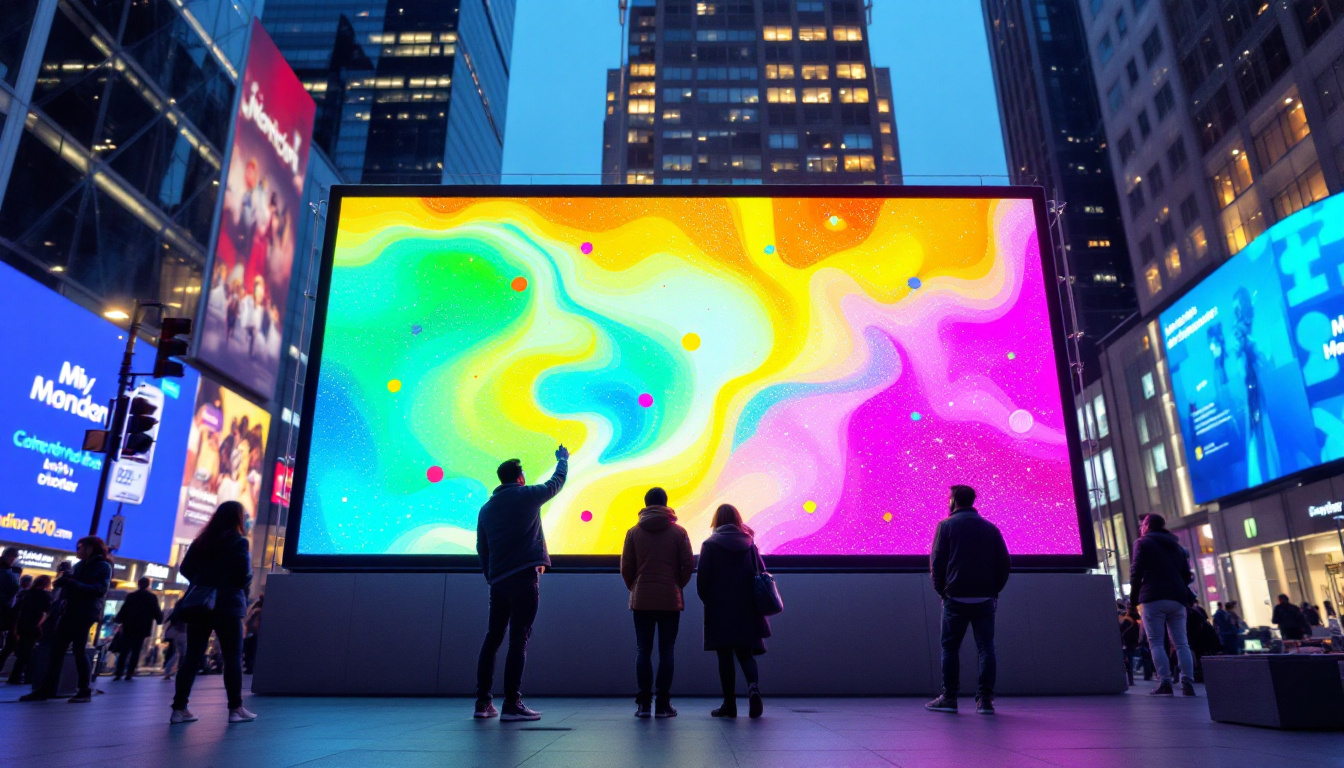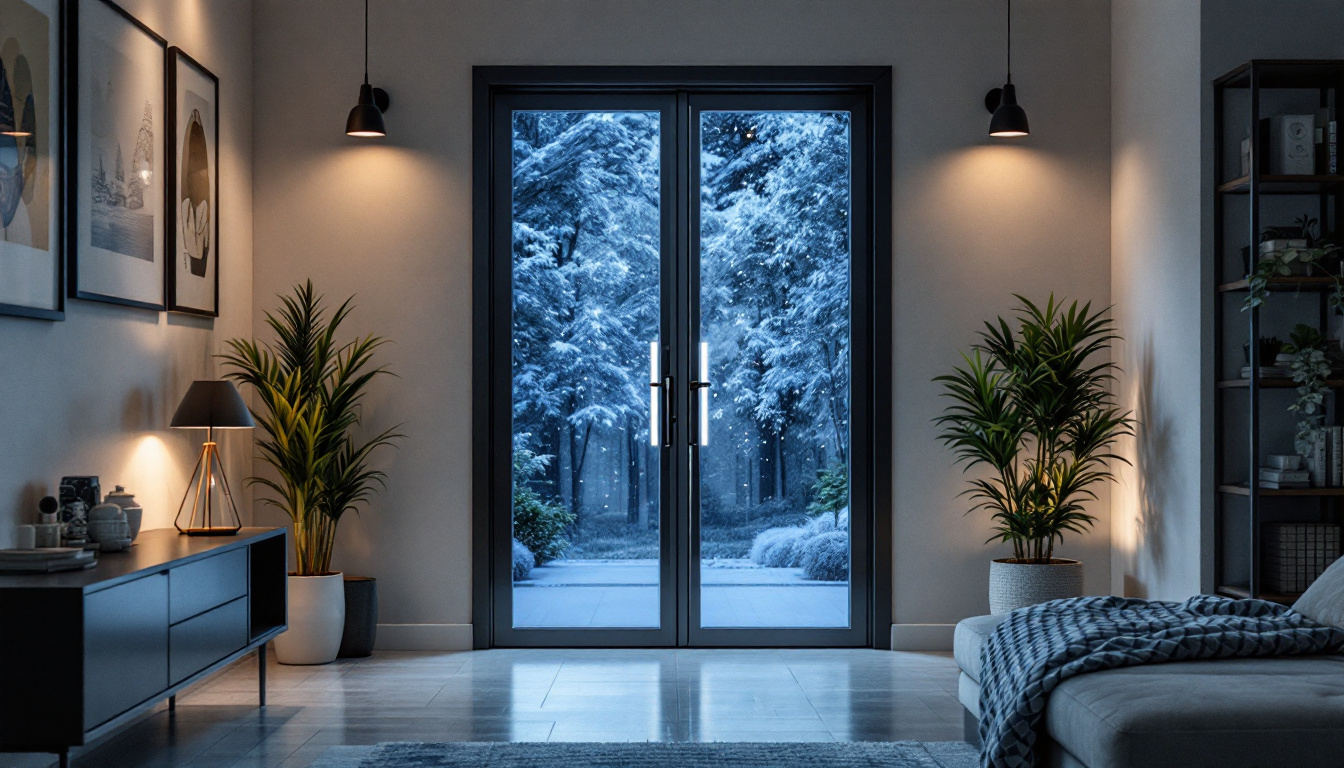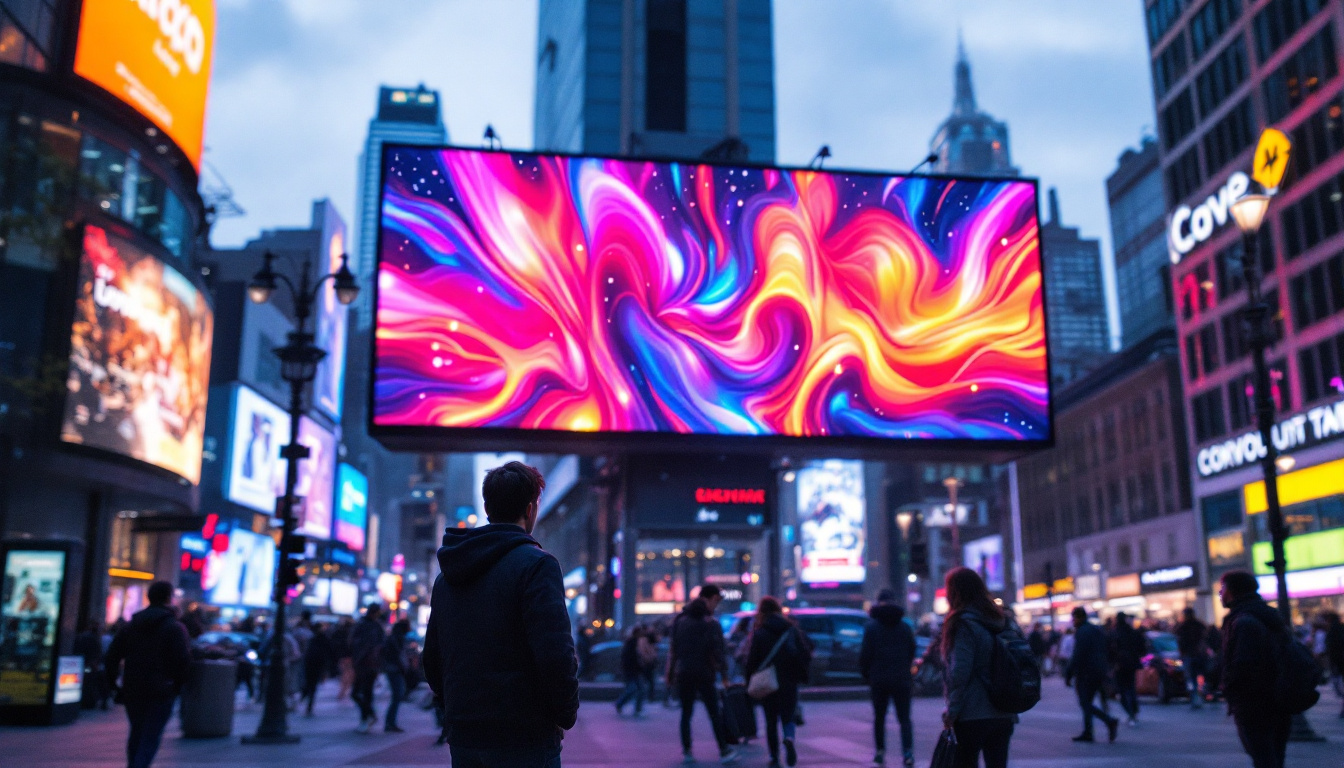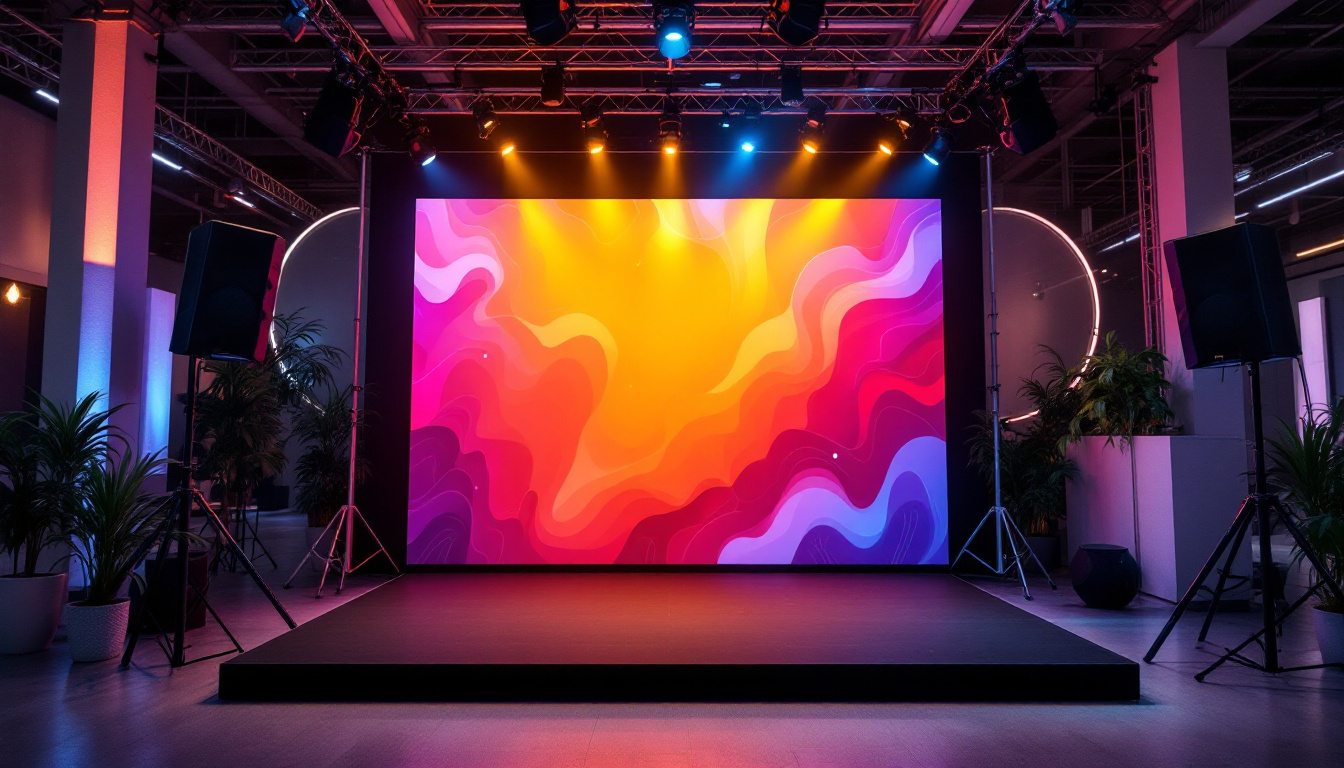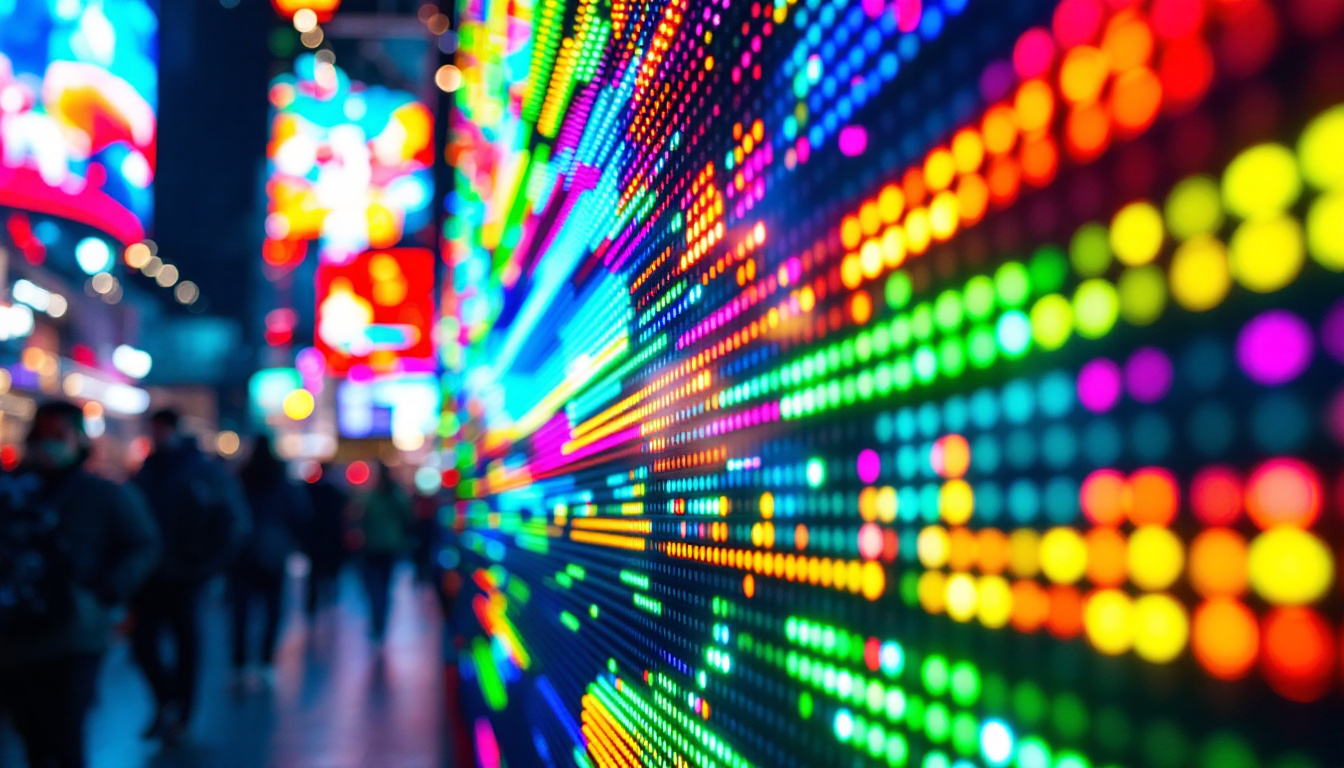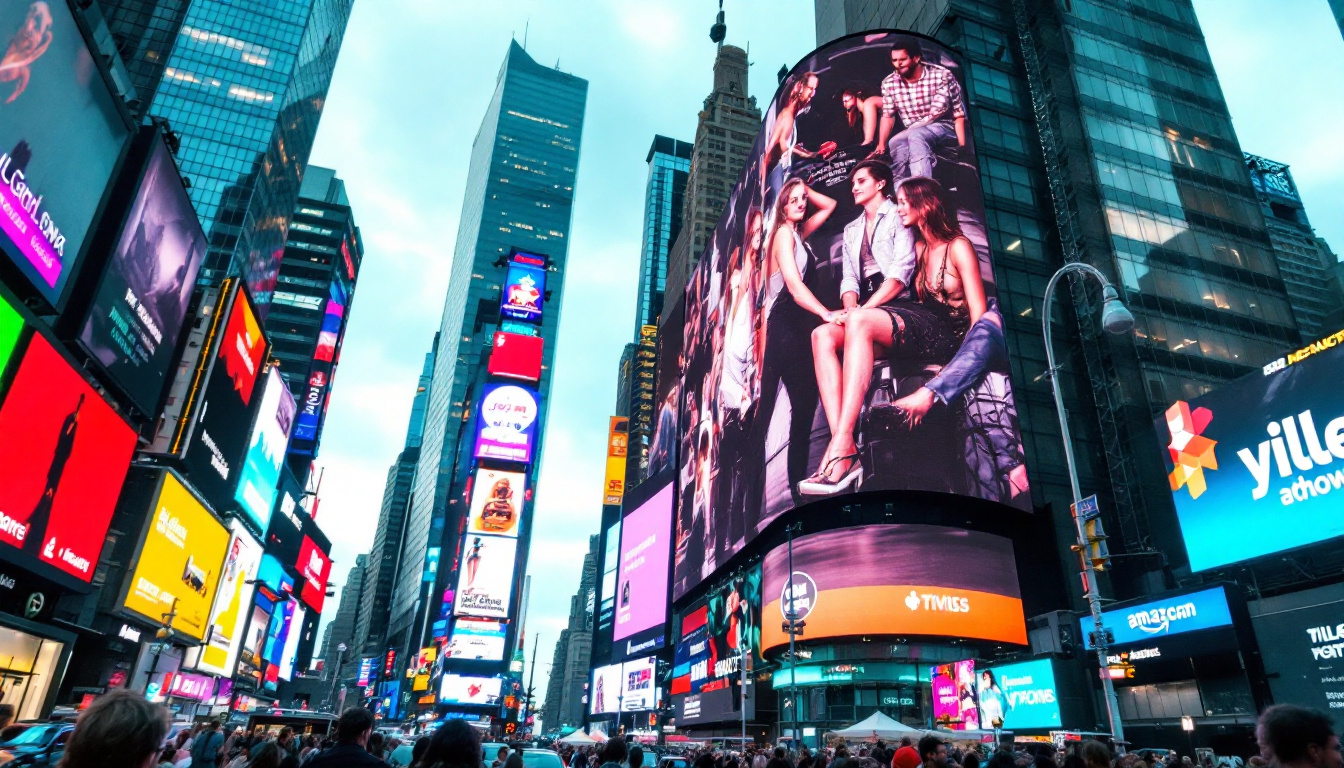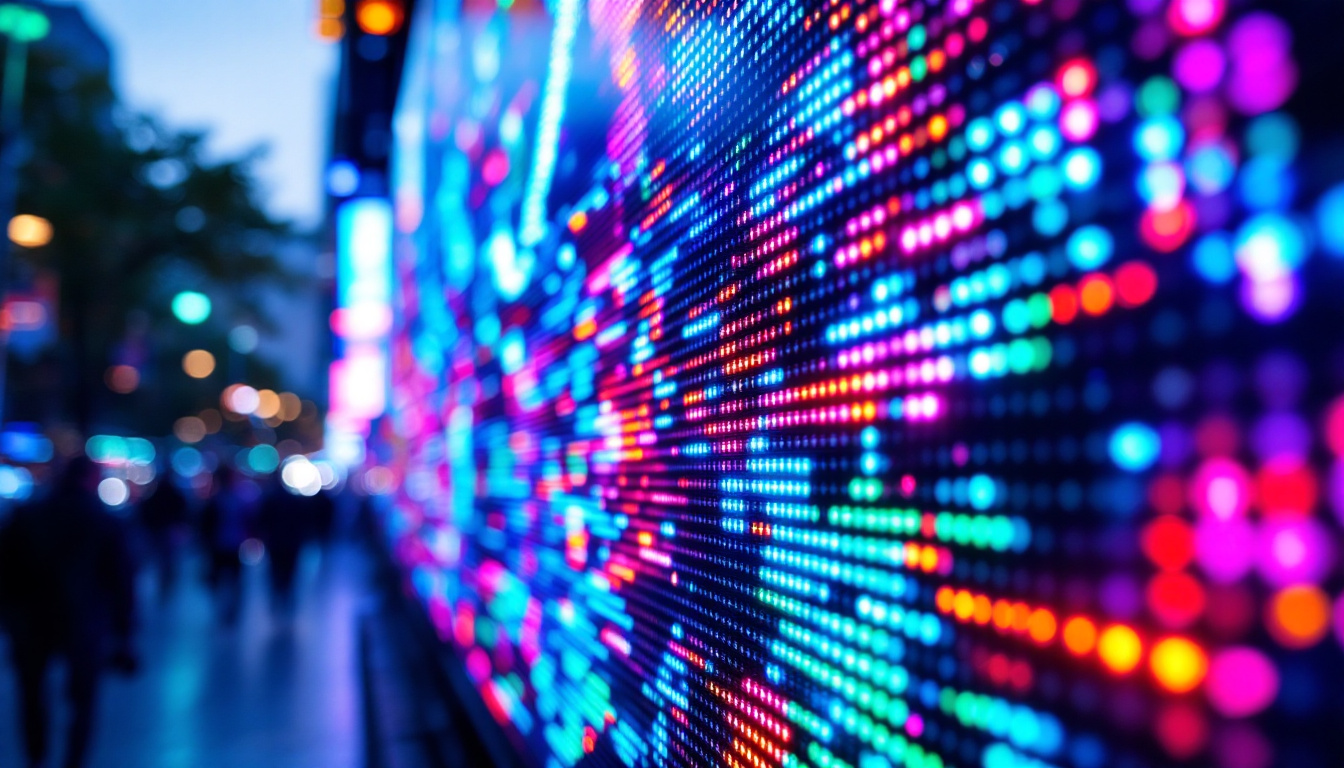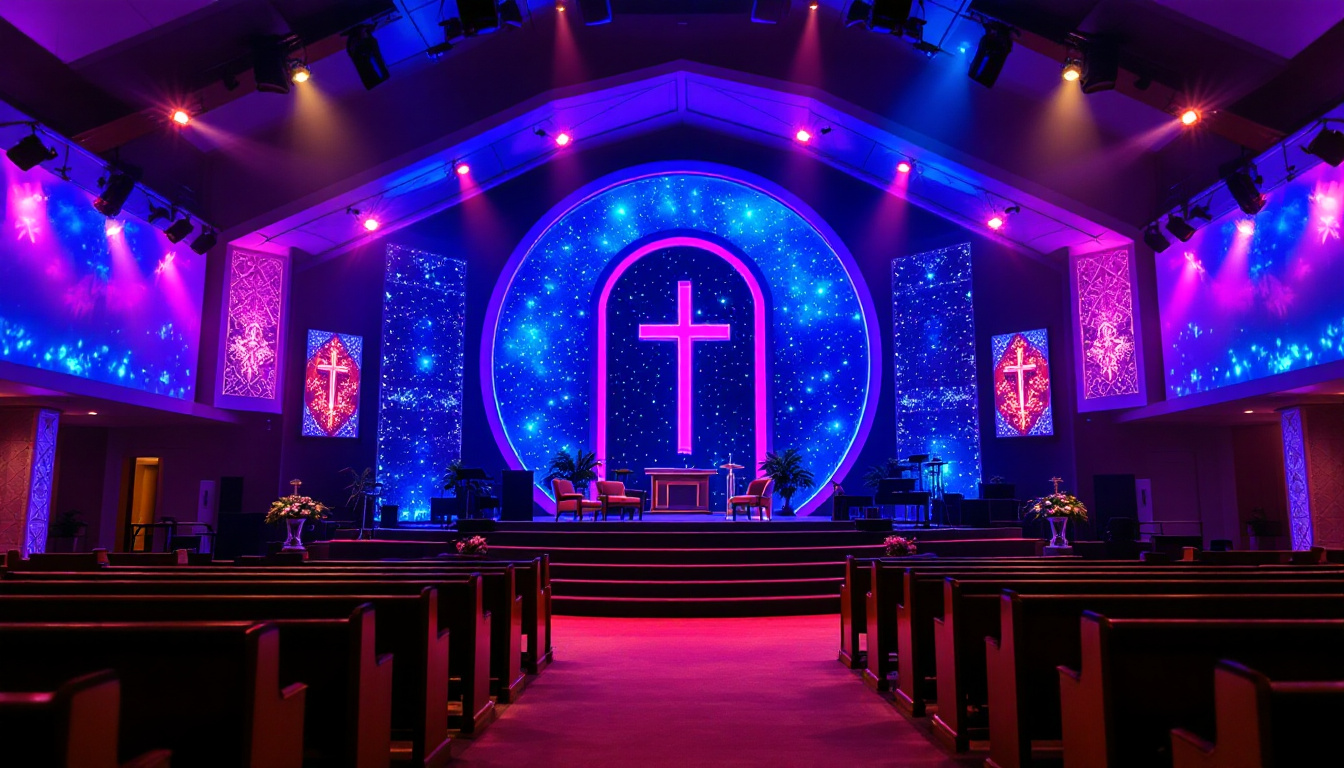Flexible LED Panel: LED Display Explained
In the ever-evolving world of display technology, flexible LED panels have emerged as a groundbreaking innovation. These versatile displays are transforming the way information is presented, providing stunning visuals in a variety of applications. From advertising to architectural designs, flexible LED panels offer unique advantages that traditional displays cannot match. This article delves into the intricacies of flexible LED panels, exploring their features, benefits, applications, and future potential.
Understanding Flexible LED Panels
Flexible LED panels are composed of numerous light-emitting diodes (LEDs) that can be bent and shaped to fit various surfaces. Unlike conventional rigid displays, these panels can conform to curves and contours, making them ideal for a wide range of environments. The technology behind flexible LED panels combines advanced materials and engineering techniques, allowing for a lightweight and adaptable product. Their versatility has led to their adoption in diverse applications, from retail displays and art installations to architectural features and automotive lighting, showcasing their potential to transform spaces in innovative ways.
Components of Flexible LED Panels
At the heart of a flexible LED panel is its LED array, which consists of multiple diodes arranged in a grid pattern. Each LED can emit light in different colors, creating vibrant images and videos. The flexibility of the panel is achieved through the use of thin, pliable substrates, often made from materials like silicone or flexible printed circuit boards (FPCBs). These substrates not only provide the necessary bendability but also contribute to the durability of the panels, making them resistant to wear and tear in various environments.
Additionally, flexible LED panels are equipped with control systems that manage the brightness and color output of the LEDs. These systems enable dynamic content display, allowing for animations, videos, and real-time information updates. The integration of smart technology further enhances the functionality of these panels, enabling remote management and monitoring. This capability is particularly useful in large installations, where multiple panels can be synchronized to create a cohesive visual experience, enhancing the overall impact of the display.
How Flexible LED Panels Work
The operation of flexible LED panels is based on the principles of electroluminescence. When an electric current passes through the semiconductor material of the LEDs, it excites the electrons, causing them to emit light. The color of the emitted light is determined by the materials used in the semiconductor, allowing for a broad spectrum of colors to be displayed. This technology not only provides high brightness and contrast but also ensures energy efficiency, making flexible LED panels an environmentally friendly choice for modern lighting solutions.
Flexible LED panels can be controlled using various input methods, including software applications, remote controls, and even mobile devices. This versatility allows users to easily update content, adjust settings, and create engaging displays that capture attention. Furthermore, many panels support integration with sensors and other smart devices, enabling interactive features such as touch responses or environmental adjustments based on ambient light levels. This interactivity opens up new avenues for creative expression and user engagement, making flexible LED panels a powerful tool in both commercial and artistic applications.
Advantages of Flexible LED Panels
Flexible LED panels offer numerous advantages over traditional display technologies. Their unique characteristics make them suitable for a wide array of applications, providing benefits that enhance both functionality and aesthetics.
Versatility and Customization
One of the most significant advantages of flexible LED panels is their versatility. They can be manufactured in various shapes and sizes, allowing for customization to fit specific design requirements. Whether it’s a curved wall in a retail space or a unique installation at an art exhibit, flexible LED panels can adapt to any environment.
This customization extends beyond shape and size; flexible LED panels can also be tailored in terms of brightness, resolution, and color output. This adaptability ensures that the display can meet the specific needs of different applications, making it a preferred choice for designers and advertisers alike.
Lightweight and Thin Design
Flexible LED panels are significantly lighter and thinner than traditional displays, making them easier to install and transport. This lightweight design reduces the structural requirements for mounting, allowing for installation on surfaces that may not support heavier displays. As a result, flexible LED panels can be utilized in innovative ways, such as hanging from ceilings or integrated into architectural features.
The thin profile of these panels also contributes to their aesthetic appeal. They can be seamlessly integrated into various environments without disrupting the overall design, providing a sleek and modern look that enhances any space.
Energy Efficiency
Another notable benefit of flexible LED panels is their energy efficiency. LEDs consume significantly less power than traditional lighting technologies, resulting in lower energy costs and a reduced carbon footprint. This efficiency is particularly advantageous for large-scale installations, where energy savings can translate into substantial cost reductions over time.
Furthermore, the longevity of LED technology means that flexible LED panels can last for many years without needing replacement, further enhancing their sustainability. This durability makes them an excellent investment for businesses looking to minimize maintenance and replacement costs.
Applications of Flexible LED Panels
The versatility of flexible LED panels has led to their adoption in a wide range of applications across various industries. From advertising to entertainment, these displays are making a significant impact in how information is conveyed and experiences are enhanced.
Advertising and Marketing
Flexible LED panels are increasingly being used in advertising and marketing campaigns due to their eye-catching visuals and adaptability. Retailers can create dynamic storefront displays that attract customers with vibrant animations and real-time promotions. These panels can also be used for event marketing, providing a captivating backdrop for product launches and exhibitions.
Moreover, the ability to update content remotely allows businesses to respond quickly to market trends and customer preferences. This agility in advertising can lead to increased engagement and higher conversion rates.
Architectural and Interior Design
In the realm of architecture and interior design, flexible LED panels are revolutionizing the way spaces are illuminated and decorated. Designers can incorporate these panels into walls, ceilings, and even furniture, creating immersive environments that blend technology with aesthetics.
Flexible LED panels can also serve functional purposes, such as providing ambient lighting or guiding visitors in large spaces like airports and museums. Their ability to be shaped and integrated into various structures allows for innovative design solutions that enhance the overall experience of a space.
Entertainment and Events
In the entertainment industry, flexible LED panels are becoming a staple for concerts, festivals, and theatrical performances. Their ability to create stunning visual effects and dynamic backdrops enhances the overall experience for audiences. These panels can be arranged in various configurations, allowing for creative staging and immersive environments.
Additionally, flexible LED panels are often used in film and television production, providing versatile backgrounds that can be easily adjusted for different scenes. This adaptability not only saves time and resources but also opens up new creative possibilities for filmmakers.
The Future of Flexible LED Panels
As technology continues to advance, the future of flexible LED panels looks promising. Innovations in materials, manufacturing processes, and smart technology integration are expected to enhance their capabilities even further.
Advancements in Technology
Research and development in the field of flexible electronics are paving the way for improved performance and functionality of flexible LED panels. Emerging technologies, such as organic LEDs (OLEDs) and micro-LEDs, promise to deliver even higher resolutions, better color accuracy, and increased flexibility.
These advancements could lead to new applications, including wearable displays, flexible screens for mobile devices, and even integration into clothing and accessories. The potential for flexible LED technology to become ubiquitous in everyday life is vast and exciting.
Integration with Smart Technology
The integration of smart technology into flexible LED panels is another area of growth. As the Internet of Things (IoT) continues to expand, flexible LED panels can be connected to smart devices and systems, enabling real-time data display and interaction.
This connectivity allows for personalized experiences, where content can be tailored to individual preferences or environmental conditions. For instance, flexible LED panels in retail spaces could change their displays based on customer demographics or weather patterns, creating a more engaging shopping experience.
Sustainability and Environmental Impact
As sustainability becomes a priority for businesses and consumers alike, the environmental impact of flexible LED panels will play a crucial role in their future development. Manufacturers are increasingly focusing on creating eco-friendly products, from sourcing materials to implementing energy-efficient production processes.
Future advancements may lead to fully recyclable flexible LED panels, further reducing their environmental footprint. As awareness of sustainability grows, consumers are likely to favor products that align with their values, making eco-friendly flexible LED panels a compelling choice for businesses.
Conclusion
Flexible LED panels represent a significant advancement in display technology, offering unparalleled versatility, energy efficiency, and aesthetic appeal. Their ability to adapt to various applications—from advertising to architecture—demonstrates their potential to transform how information is presented and experiences are created.
As technology continues to evolve, the future of flexible LED panels is bright, with advancements in materials, smart technology integration, and sustainability paving the way for new possibilities. Embracing this innovative technology can provide businesses and designers with the tools they need to captivate audiences and create memorable experiences.
In a world where visual communication is paramount, flexible LED panels stand out as a powerful solution, bridging the gap between technology and creativity.
Discover LumenMatrix’s Innovative LED Solutions
Ready to elevate your visual displays with unparalleled flexibility and creativity? LumenMatrix is at the forefront of LED display technology, offering a wide array of solutions that cater to your unique needs. From Indoor and Outdoor LED Wall Displays to specialized options like Vehicle, Sports, and Floor LED Displays, our products are designed to make your brand shine. Experience the future of visual communication with our Custom, All-in-One, and Transparent LED Displays. Check out LumenMatrix LED Display Solutions today and transform your space into a captivating visual experience.

